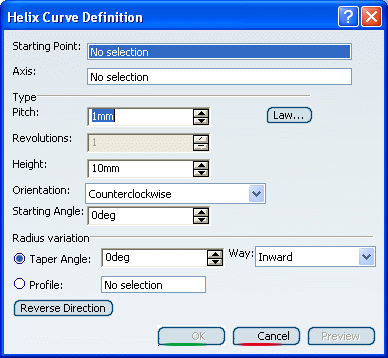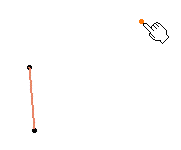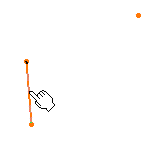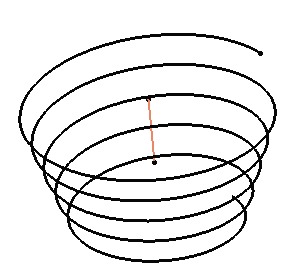Creating a Helix | |||
| |||
Click Helix
 in the Wireframe toolbar (Curves sub-toolbar).
in the Wireframe toolbar (Curves sub-toolbar).The Helix Curve Definition dialog box appears.

In the Starting Point box, select a point.

In the Axis box, select an axis.

Set the helix parameters.
- Pitch: the distance between two revolutions of
the curve
Note: You can define the evolution of the pitch along the helix using a law. For further information, refer to Creating Laws and About Swept Surfaces.
- Height: the global height of the helical curve, in the case of a constant pitch type helix
- Orientation: defines the rotation direction (clockwise or counter clockwise)
- Starting Angle: defines where the helical curve starts, in relation to the starting point. This parameter can be set only for the Constant pitch only.
- Taper Angle: the radius variation from one revolution to the other. It ranges from -90 deg to 90 deg excluded. For a constant radius, set the taper angle to 0.
- Way: defines the taper angle orientation. Inward: the radius decreases Outward: the radius increases.
- Profile: the curve used to control the helical curve
radius variation. The radius evolves according to the distance
between the axis and the selected profile (here the orange curve).
Note that the Starting point must be on the
profile.

- Pitch: the distance between two revolutions of
the curve
Click Reverse Direction to invert the curve direction.
Click OK to create the helix.
The helical curve (identified as Helix.xxx) is added to the specification tree.
